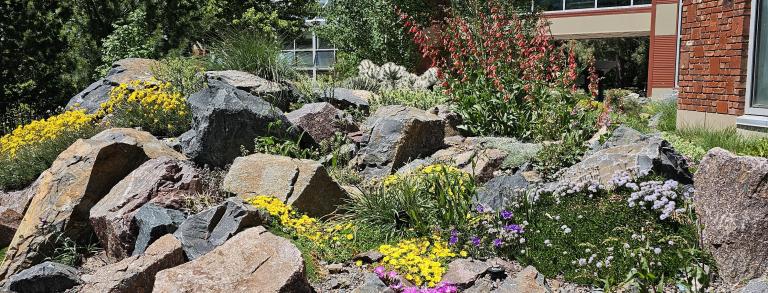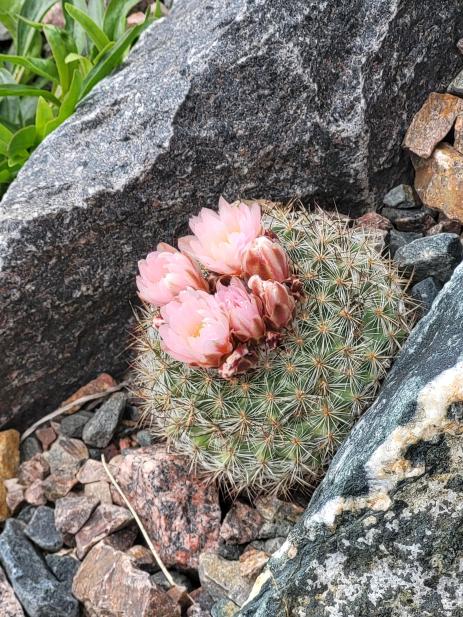Rock gardens are more than a place to grow and display plants. They are physical environments, governed by the laws of physics. One of those is temperature lag or thermal inertia. Stated simply, things with greater mass per unit volume such as water and stone change their temperature more slowly than less dense materials such as air. Temperature lag is why the warmest part of the day is not when the sun is directly overhead; it is generally between 2:00 and 3:00 pm. Seasons are affected by temperature lag in the same way. In winter, the coldest day on average is not the shortest day of the winter solstice. It is generally in late January or early February. Orchards are often sited near large bodies of water since the heat lag in the water causes temperatures to remain cooler in early spring, delaying the development of flowers so they are more likely to escape late frosts. Prior to the development of air conditioning, one of the main reasons for a holiday at the beach or lakeshore was to take advantage of the cooler temperatures caused by the temperature lag of the water.
Login to read the full article.





